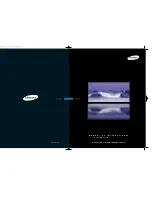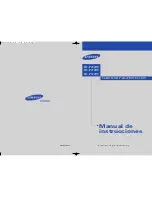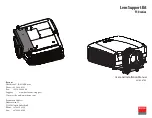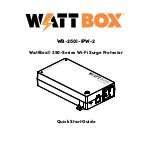
in the world of displays.
As with many trade shows, the city hosting Infocomm
changes each year. But the general organization of the show
remains much the same wherever it occurs. This year it was the
huge halls of the Orange County Convention Center that were
filled with manufacturer’s exhibits. The largest booths, some
threatening to scrape the ceiling, were those of the pro-
jector manufacturers. Many of these contained screens
of nearly theater proportions displaying high-definition
material, much of it from recent blockbuster movies,
projected by the brightest projectors available. Sur-
rounding these were the smaller booths of manufactur-
ers with more humble space requirements. Line the aisles
between with plush carpet and your picture of this trade show
is almost complete. (Did I mention the indigestible food?)
Separated from the main exhibit halls was the ICIA Pro-
jection Shoot-Out. This event-within-an-event is a showcase
of Infocomm. It is also quite misunderstood: It was created to
allow potential buyers of display equipment – potential
because nothing can be bought at the show – to compare the
performance of products from different manufacturers under
identical conditions. No one actually
wins
the Shoot-Out, and
there are no prizes – in fact, participants are strictly prohibit-
ed from declaring themselves winners. Nevertheless, it’s an
important event for manufacturers and buyers alike because
it is rare to see similar display products together in one place.
This year, over 90 projectors were presented, as well as a
handful of direct-view CRT monitors and plasma-display pan-
els. Products were divided into multiple categories according
to image resolution and display application. Projectors in a
given category were fed identical signals for display on iden-
tical side-by-side low-gain screens. For the first time, the
Shoot-Out included a high-definition “HDTV Demo” category
whose entries consisted, for the most part, of high-brightness,
large-venue projectors (the screens were large - 27 x 15 feet).
The Shoot-Out also included categories for scan converters
and video upconverters. (See the sidebar.)
Since I work as an engineer for Electrohome Projection
Systems, an exhibitor at the show, my view of Infocomm is
that of an industry insider, an advantageous perspective from
which to report the event. Of course, it carries with it the dan-
ger that I could be perceived as biased toward my company’s
products or against those of its competitors. To set this aside,
let me assure the reader that, apart from supplying a relative-
ly low volume of OEM projectors for the very High End of
home theater, Electrohome does not make products that
directly compete in the categories of most interest to this
report.
Significant New Products and Trends
Among the multitude of new display products introduced at
Infocomm, I have selected a handful as “significant” because
they demonstrate the most important trends taking place in
the display industry. They also turn out to
be the most relevant to those attempting
This year’s Inf ocomm pre-
sent ed over 9 0 project ors in
it s annual Shoot Out , as well
as a handf ul of direct -view
V
ideo upconverters have become important prod -
ucts for home theater. A large number of these
were introduced this year at INFOCOMM, almost
all of them scalers. Unlike simpler line doublers or quadru-
plers – which output progressive signals with either double
or quadruple the number of
lines in each original inter-
laced video field – scalers
offer a range of progressiv e
output formats and scan
rates to better match the
characteristics of a given dis -
play device. The new products this year at the show includ-
ed Analog Way’s Trans-Scaler, Communications Specialties’
Deuce Pro, Extron’s DVS 100, Faroudja’s DVP3000 and
DVP3000U, Focus Enhancement’s QuadScan, Inline’s
IN1402, IN1403, and IN1404, RGB Spectrum’s DTQ and VLI
200, and YEM’s DVS-1000. Space prohibits describing all of
these products, so I focus here on only a few of the most
noteworthy.
Communications Specialties’ Deuce Pro, with a sug-
gested list price of $4,995, is a much-improved version of
its popular Deuce video scaler. The product adds a compo -
nent/RGB input, VGA pass-through, stereo audio switching,
RS-232, and an internal po wer supply. Compatible with
NTSC and PAL signals, it outputs RGB in ten different for-
mats up to 1365 x 1024, at three selectable refresh rates.
Performance improvements include a two-line comb filter,
noise reduction, and a sharpness control. Extron’s DVS
100, with a list price of $2,325, includes a component input
and a three-line adaptive Y/C separator. It can decode
NTSC, PAL, and SECAM and provides a total of 17 RGB
output formats, including 480p, 720p, and 1080p. Faroud-
ja’s DVP3000, with a suggested list price of $19,995, con-
verts 480i (NTSC) to one of eight output formats, including
720p, 1080i, and 1080p HDTV. In addition to Faroudja’s
renowned film-mode deinterlacing, the DVP3000 includes
“Directional Correlation Deinterlacing” to eliminate motion
artifacts from video-originated material. Another significant
feature is the ability to upconvert 480p signals from future
progressive-scan DVD players. A component output is also
included for connecting to HDTVs. The DVP3000U
($21,995) adds 580i (PAL) and 580p input compatibility and
the ability to output at 100Hz.
A total of 11 upconverters were entered into the Pro-
jection Shoot-Out this year, including several of the new
products described above. The upconverter Shoot-Out was
divided into two categories - 31.5 kHz output and 64 kHz
output. Each product was fed identical input signals and
the output was projected onto identical side-by-side
screens – using 8” CRT projectors in the 31.5 kHz categor y
and 9” CRT projectors in the 64 kHz category. Video mater-
ial consisted of colorbar and multiburst test patterns, color
and black-and-white movie scenes, and VCR playback of
video-originated scenes, including fast-for ward and reverse
previews, as well as paused frames. These images permit-
ted only a limited e valuation of performance (scaling quality
with other output formats was not tested, for example).
Accordingly, I ranked products simply as “good,” “ade-
quate,” or “poor” based strictly on the test images shown.
In the 31.5 kHz category, I rated two products “good:” the
Astro Systems SC-2025A line doubler and the Chromatek
Biraster 3428 line doubler. Both displayed the test patterns
competently, had few objectionable deinterlacing artifacts,
and handled VCR playback well. I rated the Communication
Specialties Deuce as merely “adequate” because of its rel-
atively poor high-frequency luma response and smeary
VIDEO UPCON-
VERTERS
A L E N K O E B E L
continued on page 23
















































